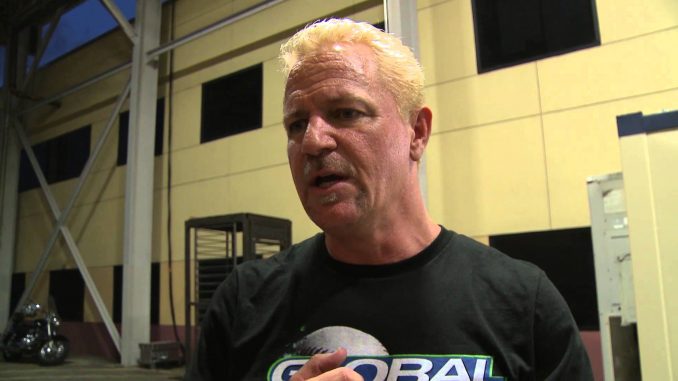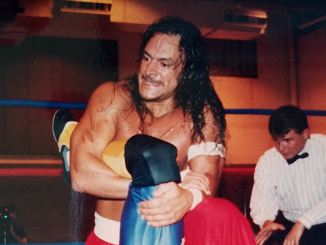
SPOTLIGHTED PODCAST ALERT (YOUR ARTICLE BEGINS A FEW INCHES DOWN)...
The last few years under the guidance of former president Dixie Carter, TNA seemed like a ship lost in the ocean without a sail, going wherever the tide was going to take them.
There were so many new directions that the company was essentially directionless and the lack of a plan was evident in the product. There were constantly new hires that would “change pro wrestling forever!” and almost all of those “major steps forward” turned out to be giant steps backwards.
Last month, Global Force Wrestling founder and chief creative officer, Jeff Jarrett said in a conference call with the media he and Anthem Sports had a 3-5 year plan when it came to GFW and its television product, Impact Wrestling. Jarrett’s details of the plan on the call were vague, probably intentionally. They planned on abandoning the TNA moniker — a process that is already complete — but the slow progression of the company’s re-brand feels anticlimactic. Instead of yanking the bandaid off with one quick pull, GFW has dragged out its re-branding over several months. They claim that’s in an effort to not confuse the audience, when it fact it only seems to be adding to the confusion.
Perhaps the biggest reason for the confusion is that the name Impact still remains as the television show. While that name doesn’t has the double-meaning that TNA does, it still stands for a product that has regressed by leaps and bounds in recent years, almost going into bankruptcy under its former boss, Carter, last year.
If they were changing the name of the company to GFW, why not change the name of the television show? When GFW was shopping its pilot a few years ago, the show was called Amped? Why not just move to that name? Get rid of all the negative feelings?
This week, GFW will run a themed episode of Impact, “Destination X,” and it’s supposed to be another step in the company’s re-branding, with new championship belts debuting after the TNA championships were merged with the GFW championships at Slammiversary in early July.
We’re not really sure what else is included in Anthem’s plan for GFW. But, here are some things they should absolutely be focusing on:
1. Find a new television network
Easier said than done, of course, but Pop TV is not a viable long-term option for GFW’s television show. Ask 10 people where Pop is on their television provider, and maybe one will be able to tell you where to find it.
The clearance, in terms of total homes, is actually quite impressive, but Pop simply isn’t a network that attracts a lot of eyeballs. It’s original programming, with the exception of Schitt’s Creek, is campy and eye-rolling. On some major cable providers — such as Comcast Xfinity in the Boston market — the HD feed isn’t available. Not to sound like a snob, but it’s 2017, and if you don’t offer an HD feed, I don’t know that you exist.
Wrestling just doesn’t fit with the other programming on the network. Where is the right place to promote Impact Wrestling? During re-runs of All My Children? My mother isn’t tuning in to GFW on Thursday nights, no matter how many promos are run during the day.
But where are GFW’s other options? It’s easy for anyone to say, “go get on a bigger network,” but that’s obviously not something that can happen with a snap of the fingers.
Also, is cable television even where the company wants to be? While streaming options are certainly the wave of the future (and some would argue, the present), I’m guessing that GFW might still have some traditional cable options when its Pop TV deal is up at the end of this year.
One network which might welcome the addition of Impact, and it’s 300,000 weekly viewers, is Fox Sports 1.
Remember, Jarrett has a history with Fox Sports, originally airing Impact on the network before its move to Spike TV in the early-2000s.
Fox Sports is clamoring for anything that can draw eyeballs to its fledgling sports network. It’s been reported in industry trades that that network is interested in bringing on Barstool Sports after the website ventured into TV earlier this year running a week of specials from the Super Bowl on Comedy Central. The Barstool Rundown show drew 310,000 viewers on its first night, 242,000 on its second and then 230,000 and 217,000 on its final two nights.
Former ESPN personality Skip Bayless signed a lucrative deal with Fox Sports 1 a few years ago after his contract with ESPN expired. He hosts a daily show with Shannon Sharpe (former NFL tight end) and he’s being paid a reported $25 million over four years. That show regularly draws less than 100,000 viewers.
Impact Wrestling, with its current Pop numbers, would be one of the biggest shows on the network. And on top of that, it’s weekly original programming.
There’s also the possibility that Jarrett can negotiate his way into a return with Spike TV (soon to re-brand as the Paramount Network), but that seems less likely, even though Spike’s problems seemed to be more with Dixie Carter than the product itself, and I doubt Spike would take on as much financial responsibility in a deal.
Other possibilities could include WGN, where Carter was supposedly negotiating before the Pop deal, as well as AXS, FX (or FXX) or CBS Sports Network.
2. Get out of Orlando, and build a home base
In a shoot interview with Kayfabe Commentaries a few years ago, Jim Cornette detailed his original plan for Ring of Honor when he was running the creative side of the company. Cornette said that his plan was used as the business proposal that Sinclair Broadcasting ended up buying the company on. Anthem should use it as a blueprint for GFW.
Anthem needs to find the best state to do business in. I’m not going to pretend like I know where that location is, but from a tax and cost-of-living standpoint for its employees, the company needs to find the best location for its headquarters.
From there, find a big building available for lease in that location. Cornette suggested an vacant department store, where there would be a big building but also lots of parking.
You find that building and then you set up camp. You build an “arena” with black bleachers and chairs. You make sure it’s zoned so that you can sell tickets (make it cheap, so people come, but also generate some revenue). Permanently hang and focus all the lighting. It’s your building, so set it up once and then leave it alone. Cornette said he wanted to be able to walk into their arena on TV taping day and flip a switch. That’s doable if it’s your building.
In that same building you can build out your offices and also your merchandise warehouse. Everything comes under one roof.
You also open a wrestling training school (you have the building already) and it’s a way to give one of your veteran wrestlers, who wants full-time employment, a job on top of his contract work as a pro wrestler.
You don’t have to pay Universal Studios to rent the sound stage on top of paying to rent office space and paying to rent a warehouse. Bring it all under one roof in one location.
3. Re-build the roster
This process is already ongoing, but there should be a structure to it.
GFW isn’t in position to have 30 wrestlers under full-time contracts making in the six figures. I’d argue that the company shouldn’t even have many full-time wrestlers.
The company should have a small roster of “full-time” wrestlers. Maybe eight, but 10 at the absolute most. Pay those contracts well, and combined with the lighter schedule, they could attract some top wrestlers who are nearing the end of their career. Rey Mysterio? Johnny Mundo? Guys like that. While doing this, GFW should also be keeping up their talent-sharing deals with international promotions which has consistently given the television product a new and fresh feel.
Those 8-10 wrestlers are the ones you build around. They are the ones you protect at all costs. Everyone else you use can be used on pay-per-appearance deals. That’s not great news for the wrestlers, but for GFW, it’s how it has to be for now if the company wants to be able to grow. There’s no reason why, if all goes well, the 8-10 contracted wrestlers can’t be 15-20 contract guys in five years. But it’s going to take time.
The nature of the television schedule — taping once every 5-6 weeks — makes the pay-per-appearance structure possible. They could easily bring in someone for four days and get 5-6 weeks of television done and wrapped up. The story arcs would simply run the course of a taping, unless there were more than one contracted wrestler involved. That way, there is no risk of someone ‘leaving’ in the middle of a storyline. The storylines between contracted wrestlers can be stories that are told over longer periods, because there’s no risk of those wrestlers not returning for the next set of television tapings.
Of the guys on the roster right now, Eli Drake, ECIII, Bobby Lashley, Trevor Lee, Eddie Edwards and Moose could easily be on that list of contracted guys. From there, GFW should look to add 2-3 wrestlers with name value. Rey Mysterio, Johnny Mundo, Ricochet, Jack Swagger, PJ Black or Sami Callahan, for example.
From there, your base structure is set. Hopefully, you have a new television deal and at the same time, you have your headquarters, your TV arena and a strong (and affordable) structure to your roster.
(Mike McMahon reviews TNA Impact Wrestling every week for PWTorch.com and also co-hosts the Thursday PWTorch Livecast immediately following GFW Impact at 10 p.m. ET. Follow him on Twitter @MikeMcMahonPW)




great story I would have shared on facebook or twitter if I had the option
Wait, POP runs re-runs of All My Children?